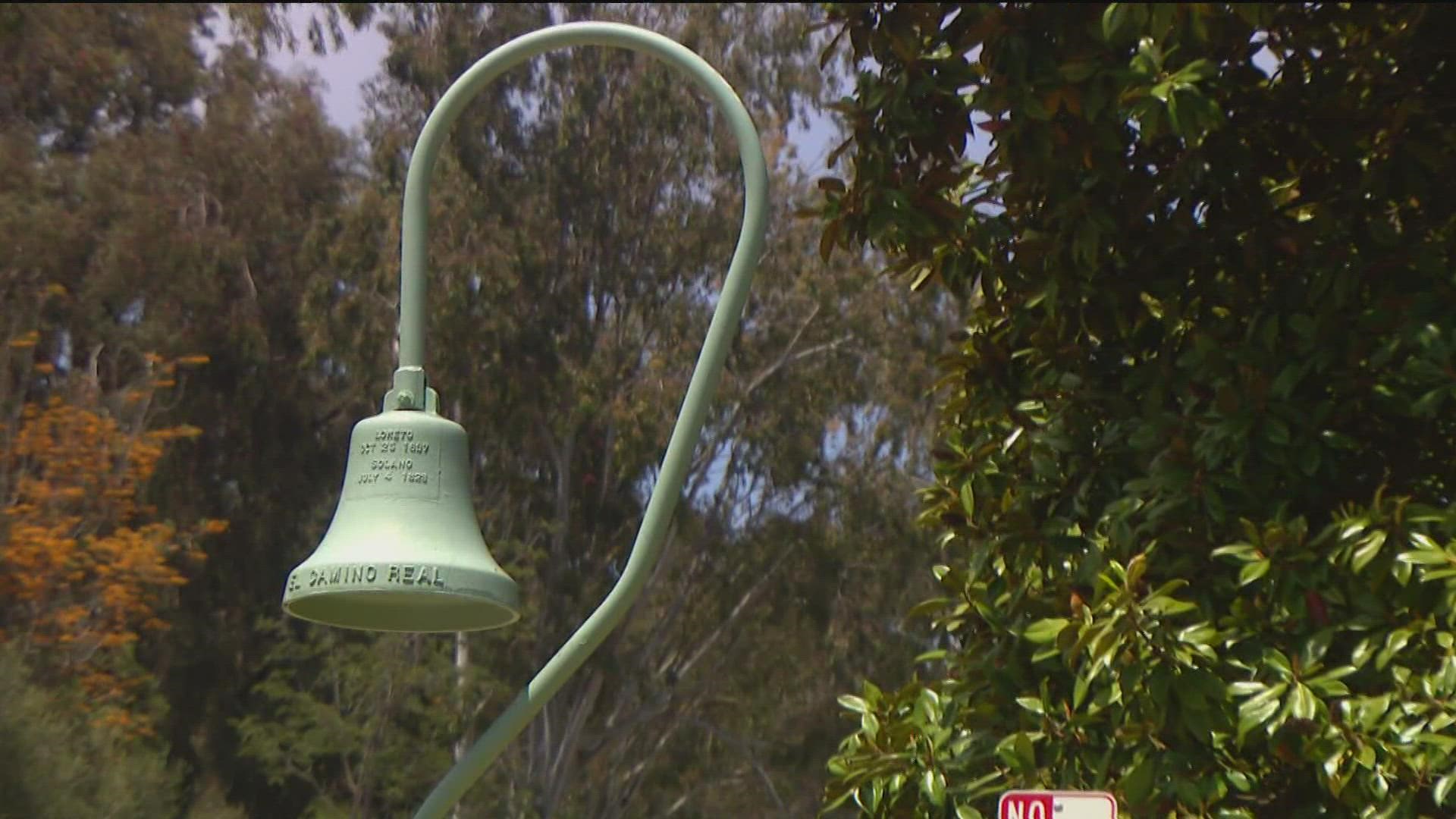SAN DIEGO — Along some of California's busiest streets and highways, hanging about ten feet off the ground, stand iron-green colored bells. You've probably driven past a bell without noticing; most of them stand in what are now everyday spots, like the one next to a bus stop on Gilman Drive.
At UC San Diego, Associate Professor of History Dana Velasco Murillo goes through old documents at the Special Collections Library, studying the monuments and the Spanish missions that inspired them.
"The mission system started in the late 1700s," said Prof. Velasco Murillo. "The Spanish crown was trying to populate and settle California to make sure no other foreign powers would come in and try to poach this area.
That race to claim the land sparked the idea of the missions. Following the king's orders Franciscans gathered the Native American tribespeople, sometimes by force to the mission sites to convert them to their religion and impose Spain's ways of life.
"And they then would become the 'vecinos,' or what we would now call citizens or residents of California, giving this area a population base," said Velasco Murillo. "We're talking about a clash of life ways,"
It's a clash representing dark years in the histories of many of California's native tribes.
"For our tribe, it's shameful what they did," said Valentin Lopez, Chair of the Amah Mutsun Tribal Band in Central and Northern California.
Lopez says his ancestors faced the Spanish wave of colonization at two missions. Fast forward to the late 1800s and early 1900s, a time when California was in the middle of a population boom and an identity crisis.
"California was trying to create a kind of image or heritage for itself," Prof. Velasco Murillo explained. "So, they looked to what we call the 'Hispanic Past,'"
That, Velasco Murillo says, started a wave of innovation in architecture, street naming and more, in attempts to attract people to the state. The bells come out of this movement to "romanticize and nostalgist" that "Hispanic Past," said Velasco Murillo.
Throughout the years, several different groups put up the mission bells along "El Camino Real," a road supposedly linking all of California's missions, from San Diego on the south end to Sonoma County on the north end. That memorialization is where some tribes take issue.
"The bells represent slavery, brutality,” said Lopez. "We see them as equal to the confederate flag, the confederate statues,"
Lopez leads RemoveTheBells.org, a campaign to take the bells down.
CBS 8 Anchor Jesse Pagan asked Chair Lopez if other tribes feel the same way.
"Absolutely, absolutely," said Lopez. "For one of the bell removals we had in Santa Cruz, we invited other tribes to join us, and we had representative from a tribe in San Diego [and] from tribes in Los Angeles."
We reached out to several tribes in the San Diego area but did not hear back at the time of airing.
Lopez says his campaign has been successful in taking down some bells. Others have proven to be a challenge, with some arguing removing them and other symbols, like statues of Christopher Columbus would wash history away.
But even outside of the bells, there is a push to add the Native American viewpoint to the standing arc of history.
"We want to continue to teach about the missions, to give that context for what native peoples lived in," said Prof. Velasco Murillo. "But we want to make sure we're nuancing these institutions, we're not just romanticizing them. There's a real, genuine effort on the part of community members, scholars, people working at museums and archives to make sure those indigenous stories are told."
WATCH RELATED: Above Lake Murray in San Diego (May 2022)

